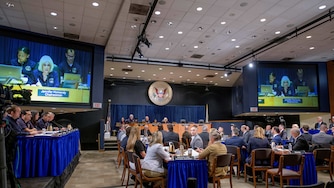Along the Canton waterfront Friday morning, a few hundred oxygen-starved crabs and fish bobbed to the surface.
The die-off was the result of this week’s big dip in temperatures, which killed algae in the area and depleted the oxygen these bay denizens need to survive.
These kinds of fish die-offs can occur routinely when temperatures begin to fall near the end of summer. Temperatures dropped into the 60s for much of the day Thursday, while the sun remained behind clouds for much of this week.
Chris Luckett, who heads fish kill and algal bloom investigations for the Maryland Department of the Environment, said his agency began to hear reports Friday morning of fish and crabs on the surface along the Canton waterfront. Between Canton and Fells Point, an agency biologist has tallied close to 200 dead crabs and around 100 dead fish, almost all Atlantic menhaden.
Low temperatures and almost no direct sunlight this week stymied photosynthesis in the harbor, Luckett explained. Part of a so-called “pistachio tide,” this weather change led to depleted oxygen throughout the water column, while milky green sulfur clouds migrated to the surface of the water and brought a hydrogen sulfide stink with them.
Compared to fish kills that Maryland is used to seeing, a few hundred fish and crabs amount to a small death toll. Last year on the Eastern Shore, Luckett said, the state recorded close to 6 million dead fish in a series of six die-offs.
Friday’s die-off also isn’t nearly as significant as one that occurred during a thermal turnover in early September a year ago, when parts of the Inner Harbor were awash in thousands of floating dead menhaden. A longtime curator with the National Aquarium said at the time that he hadn’t seen a die-off of that magnitude in the Baltimore Harbor in 37 years on the job.
Last year’s event was the result of a so-called thermal inversion, a common occurrence as summer turns to fall, when waters on the top and bottom of the harbor turn over. Sulfur bacteria, raised to the surface and exposed to sunlight, then perform anoxygenic photosynthesis — essentially, photosynthesis without producing oxygen — which is why the levels of oxygen drop.
Luckett said he wasn’t prepared to say whether this week’s event was part of the usual thermal inversions that happen seasonally in the harbor. Sunshine returned to Baltimore on Friday, while temperatures climbed back into the 80s, and the MDE investigator predicted a turnover in the waters triggering a significantly larger die-off still could happen.
While the death toll from Friday’s event seems to be in the low hundreds, Luckett said, visitors to the harbor also may find larger numbers of fish milling near the surface. Those fish haven’t died but still might, he said.
Officials encourage residents to report fish kills to MDE by calling 443-482-2731.





Comments
Welcome to The Banner's subscriber-only commenting community. Please review our community guidelines.